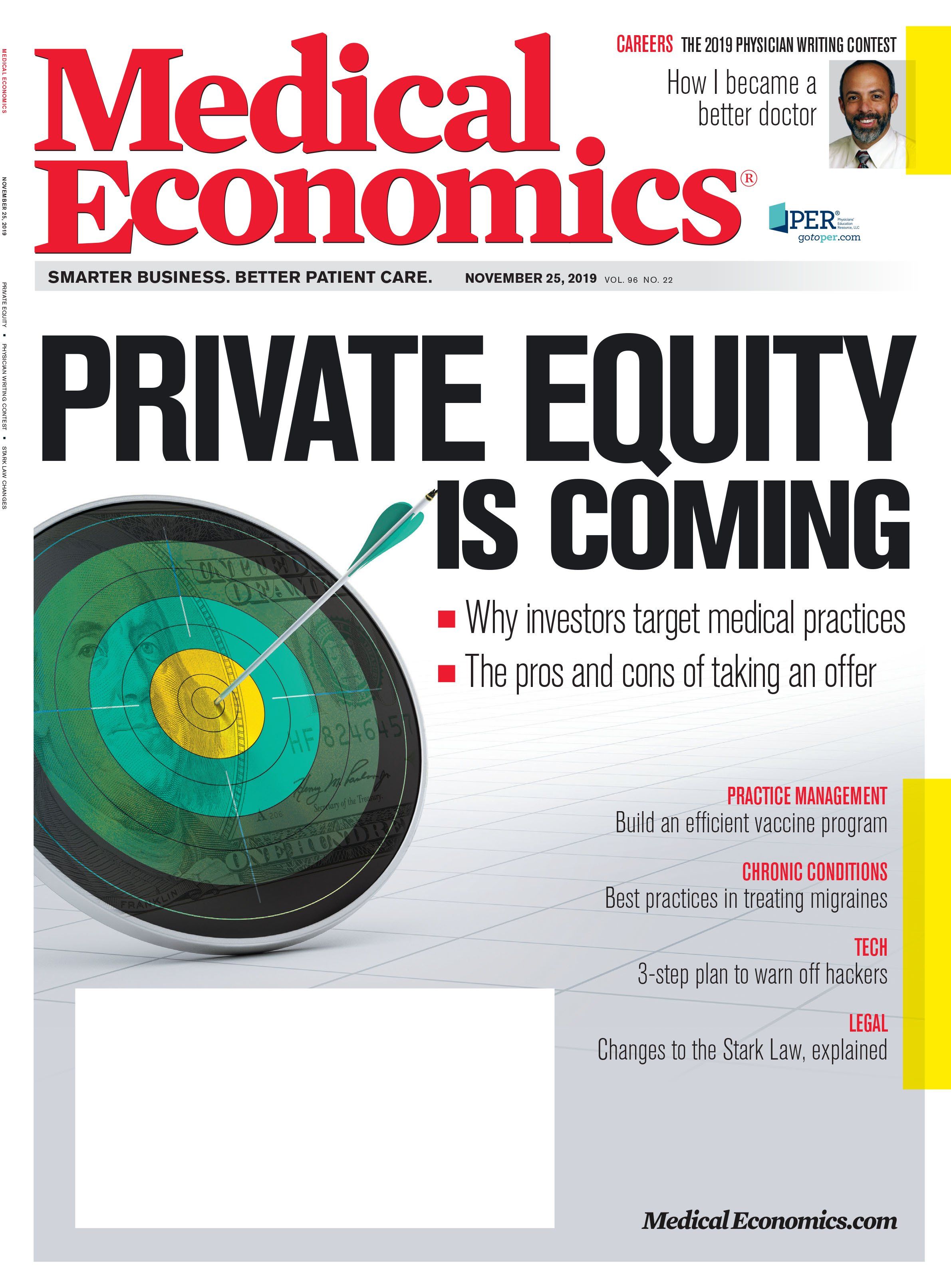Publication
Article
Medical Economics Journal
How to build an efficient vaccination program
Author(s):
While vaccination is mostly identified with immunizing children against diseases, providing vaccination services in a clinically and economically efficient way is foundational to the health of all patients and can add to a practice’s income stream.

Physicians can adopt administrative and care management processes to deliver cost-effective vaccination services that simultaneously provide highest-quality patient care. While vaccination is mostly identified with immunizing children against diseases, providing vaccination services in a clinically and economically efficient way is foundational to the health of all patients and can add to a practice’s income stream.
“Adults need to be vaccinated; that’s a starting point,” says Jesse Hackell, MD, FAAP, who has led Pomona Pediatrics, in Pomona, N.Y., since founding it in 1987. “It’s not just against immunococcal disease; it’s shingles, chicken pox, measles and HPV. Just because you’re older doesn’t mean that you don’t need vaccines.”
Hackell adds that providing vaccinations can net a fair return. “Vaccine administration can be a profit center for a practice if it’s done correctly. It’s not a huge profit center but it’s possible to provide a margin.”
A vaccine champion
Successful vaccination programs require buy-in from the entire practice staff and a smooth-running operation where all the details are handled properly. Doing so requires a “vaccine champion,” says Hackell.
The champion is the advocate who persuades everybody in the practice, clinicians and office staff alike, to embrace and promote the goal of vaccination. “Even the folks answering the phones must tell people ‘If you’re coming in for a well visit, we’re going to give you some vaccinations, too, if you need them, so bring your records,” says Hackell.
The champion also serves as the knowledge resource for the practice-the person who knows what the vaccines are for, their indications, recommendations, and schedules. In a practice with multiple physicians the champion usually is a clinician, who could be a nurse, a physician or even a physician’s assistant.
Running the program on a day-to-day basis requires a second essential person: a vaccination coordinator, who centralizes control of all program workflow processes, from ordering and inventory to administration and billing.
Among other responsibliites, the coordinator must properly maintain vaccines, syringes and related supplies; ensure the integrity of the vaccine records system; and establish protocols for administering and storing the vaccines.
Creating revenue
Doctors won’t get rich providing vaccination services, but modest revenue gains are possible. How?
“It comes down to buying them at the lowest possible price, using them expeditiously, and keeping track of them so that you’re not wasting vaccines,” explains Jamie Loehr, MD, FAAFP, owner of Cayuga Family Practice, in Cayuga, N.Y.
Practices can reduce the prices they pay for vaccines when they buy directly from manufacturers or join a vaccine purchasing group, in which independent practices combine to negotiate reduced fees for bulk vaccine purchases.
“There’s a convenience factor if you buy from a supplier, but the prices tend to be a bit higher,” says Loehr. Manufacturer rebates may be available to direct buyers and purchasing group members, too.
Noting that pricing isn’t going to vary much among groups, Jeff Winokur, a vaccine procurement and administration expert and president of Atlantic Health Partners, a Delray Beach, Fla. vaccine purchasing group, suggests that practices look for other ways to determine which purchasing group would be the best fit.
“Is there a cost to join a group program? Do they provide educational information about vaccines, including updates on indication changes and the availability of a vaccine? Do they do any advocacy on your behalf with payers? Do they have expertise for vaccines in the age range that a practice has?”
Since manufacturers have standard policies on replacing expired vaccine stock, “buying groups can help make sure their members understand those policies, as well as return policies, for instance, with flu,” adds Winokur. “Different flu manufacturers have different policy answers to questions like ‘Okay, I have 20 doses left. What do I do with them?’ ”
Practices also can learn when manufacturers are going to raise their prices. Then, depending on what they have in stock and how much they’ll be using in the short term, they can decide whether to buy more during the period between the announcement and the effective date of the price hike.
What’s critical financially is for the practice to get a decent return on the cost of the vaccines. “They should look at their major insurers to see what the payments are for the vaccines, and if they’re not making a significant margin on the vaccine product, they need to renegotiate that,” Hackell advises. “If you’re not getting 25 per cent above the private sector cost, you’re going to lose money.”
Buying online directly from the manufacturer keeps the balance sheet in the black for Loehr, who notes that the savviest insurance companies pay $2 to $3 more than the lowest market prices they can find for vaccines. Accordingly, he says, he’ll make $2.50 if he buys the vaccine for $50 direct from the manufacturer, but lose that same amount if he buys it from a retailer.
Timely reminders
Helping patients stay current on their vaccinations not only keeps them healthy but produces a steady source of revenue. Immunize.org, a website that provides information on starting and operating a vaccination program, shows how to make this an efficient, labor-saving workflow process (and a subtle marketing tool) for physicians. The site provides templates for standing orders, which lets staff take a general policy rule and apply it to specific patients, so the doctor doesn’t have to be present for a vaccine administration.
“With a standing order you can tell them, ‘You’re due for a vaccination today. Would you like to have it?’ And if they say ‘yes’, you give it to them without needing an individual patient order from the physician,” says Loehr. “The site has a bunch of different standing orders in different languages for different vaccines.”
Practices also can install alerts in their EHR when a patient is due for a vaccination or provide phone call reminders for that purpose.
Doctors can compete with the convenience of pharmacy and retail clinic vaccinations by holding in-and-out vaccination clinics – especially for flu shots – where patients can get vaccinated within minutes without having to complete paperwork or schedule appointments.
Winokur suggests letting patients know about this service before the flu season begins, and designate certain days and/or times that make it easy for patients to take advantage of these streamlined services.
Keeping the product safe
As important as profitability and patient participation is having protocols for safely storing and handling vaccines.
The CDC’s best practice guidance specifies a few essential steps for safe storage: immediately checking newly-delivered vaccine packages for damage by examining and documenting the condition of the vaccine and its shipping container; comparing the amounts, lot numbers and expiration dates of the vaccines against the packing invoice to see that they match; and accurately monitoring and recording vaccine temperatures.
If there’s no package temperature indicator, the coordinator should check that the packaging has enough insulation and refrigerant to chill vaccines to the correct temperature. In either case, it’s necessary to ensure that inactivated vaccines are unfrozen.
Vaccines should be stored in a refrigerator designated just for that purpose, with a built-in temperature indicator. They should be kept on the middle shelf, with older vaccines in front, and none of them touching the refrigerator sides or the freezer. The practice must keep daily temperature records and save them for at least three years. “And you must have an alarm on that fridge if it goes down, where someone gets notified to make repairs quickly,” says Cristy Good, MPH, MBA, a senior industry advisor with the Medical Group Management Association, in Englewood, Colo.
Recordkeeping should include lot numbers, too. “It’s important to track those lot numbers in your EHR because if there’s ever a recall, you’ll need to pull out a list of patients who received [vaccines from] that lot number,” says Good. Additionally, doctors should make sure their purchasing contracts with vaccine manufacturers tell them if recalled products yield a refund or credit.
The coordinator also should do a weekly inventory to track expiration dates so that soon-to-expire vaccines aren’t wasted. (Most expired doses of vaccines can be returned for credit.)
“You need to have a process in place that tracks what expires first so that you use that first,” says Good. “But you also need to keep track of your supply and demand, so that you don’t stock up vaccines at the wrong time of the year or the season.”
Government agencies such as the CDC help practices plan for these needs by issuing alerts about when a flu or other disease outbreak has begun. Analytics-based EHR programs that leverage population health data also can guide practices in anticipating what amounts and types of vaccines they’ll need at a given time.
Other workflow aids with robust predictive logic are state immunization registries, which contain patient vaccine records and tell when patients are due for immunizations.
Consistently emphasizing the necessity of vaccines, exercising diligent inventory and storage control and making price-conscious vaccine purchases are integral to a vaccination program that provides needed care for your patients while enhancing practice revenue. And don’t forget common-sense efficiency.
“You can’t afford to have wasted doses,” Hackell says.





